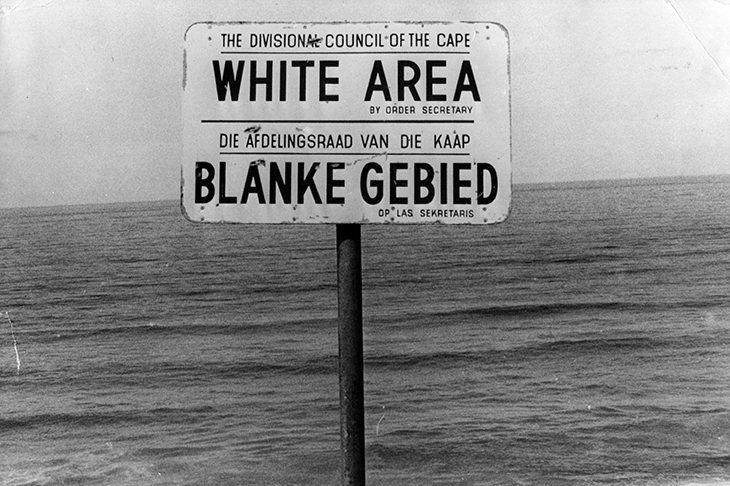Around 1970 I was labelled ‘Public Enemy No. 1’ by white South Africa’s newspapers for leading militant anti-apartheid protests which stopped all-white sports tours to Britain. And a year ago when, under parliamentary privilege in the House of Lords, I exposed looting, corruption and money-laundering by former President Zuma and his cronies the Gupta brothers, some jaundiced white South Africans again attacked me — this time for having helped deliver ‘corrupt black majority rule’.
They should read Hennie van Vuuren’s fine book, which tellingly concludes:
The current struggle against [Jacob Zuma-inspired] corruption in South Africa is undermined by a basic lack of appreciation of the nature of that corruption and the criminal networks that facilitate it — namely, that they are continuities of a profoundly corrupt system that predates the first democratic election [of Mandela].
In other words, Zuma and friends merely continued where the apartheid state had left off.
Van Vuuren’s monumental work is a gripping story of conspiracy, assassination, bribery and two-faced global dishonesty from London to Washington, from Paris to Pretoria, from Moscow to Beijing, from Buenos Aires to Tel Aviv.
There was rampant money-laundering during apartheid, through supposedly reputable international banks, by the state-owned arms company, Armscor. It deployed its networks of international arms dealers and fixers to deliver the weapons and pay the money that kept the war going, against both the black majority in South Africa and neighbouring states such as Angola and Namibia.
Van Vuuren methodically and relentlessly exposes what he calls ‘the arms money machine’:
Bankers in countries such as Belgium and Luxembourg sat back and watched the profits roll in, all the while helping Armscor to construct an international system of money-laundering. Swiss commercial banks were among the most significant and long-standing supporters of Pretoria.The banking establishment in all the western world’s largest economies wanted a stake in the South African game.
No doubt in more recent years, similar channels were also exploited by the Zuma family and the Gupta brothers, as they money-laundered through Dubai and Hong Kong the billions of rand they looted from taxpayers.
In 1994, with Mandela about to assume office, the national intelligence agency alone destroyed 44 tonnes of incriminating documents — ‘the written record of countless acts of culpability,’ writes van Vuuren. The scale of destruction of military intelligence files is not known, but doubtless that was massive too.
What van Vuuren terms apartheid’s ‘march to militarisation’ from the 1960s was total, especially under President P.W. Botha from 1978. Before that, President Vorster’s security services had reigned supreme, and used every trick in the book, from bribery of foreign actors to subterfuge and intrigue in which arms-dealers ‘made fat commissions’.
Between 1974 and 1978, under Vorster, the government’s information department secretly put about £30 million into special projects, including an undercover attempt to buy American newspapers. There was also a secret bid to acquire the British publishing company Morgan-Grampian. Vast sums were spent on wooing western journalists, broadcasters and compliant politicians, British Conservative MPs included. But eventually this misuse of funds was exposed in the second half of 1978, bringing about Vorster’s fall. With his security empire discredited, the new President Botha presided over the militarisation of South Africa, from government downwards.
The centre of decision-making shifted from the party and the intelligence services to the military-security establishment. The defence force budget rocketed and its fighting strength soared. The militarists took over foreign policy with armed strikes into neighbouring countries by land and air, killing civilians and arming and supporting barbaric insurgent bands such as Renamo in Mozambique and Unita in Angola.
However, pressure for an international arms embargo, despite numerous violations and examples of collaboration, did deprive South Africa of various major weapons systems. It could not acquire fighter planes and other vital items during apartheid’s later years, which led to its loss of aerial superiority over the region. In turn, that weakened capacity led, in 1988, to the South African army being defeated at Cuito Cuanavale by Cuban soldiers in Angola. It was a major blow: never had the powerful white state been vanquished.
Inside the country, in June 1988, another even more comprehensive and stringent state of emergency was declared, with the imposition of martial law. Then the onslaught began. Organisations were banned, open-air gatherings prohibited and the police and military moved into the townships to detain 30,000 people. The government recruited vigilante bands, which they paid, armed and turned loose on radical township activists. Homes were burned and the offices of anti-apartheid organisations bombed. The security forces looked on, content that their clandestine plan of organising these vigilantes was proving fruitful. Despite denials at the time, it was confirmed in the 1990s that this strategy was authorised at the highest level of the government.
In March 1988, Dulcie September, the ANC leader in France, was assassinated by ‘forces close to French-South African arms deals’, according to van Vuuren, the trigger probably pulled by a South African military intelligence official — a consequence of France’s iniquitous proximity to the apartheid war machine.
Van Vuuren shows how under the final 15 years of apartheid a ‘war economy’ was built, with defence expenditure ballooning to well over 20 per cent of the annual state budget, and private companies ‘becoming important and highly profitable players in a siege economy’, and being drawn into sanctions-busting too.
These companies supplied everything from explosives to shoe polish to the military, often in lucrative contracts, with cosy relationships to ministers and secret funding to the ruling National party. There was a clandestine world of government departments with open wallets, and private suitors happy to dip in to evade foreign restrictions.
Buying oil on the black market was cripplingly costly. One estimate quoted by van Vuuren puts it at more than R500 billion in today’s value. A covert conduit for oil was the sanctions-busting operation GMR, a key partner to which was Craig Williamson, the so-called South African ‘master spy’, responsible for infiltration of anti-apartheid groups, murder and mayhem.
The apartheid regime was indeed promiscuous, even doing military work for the Russians and obtaining Chinese arms — both countries, in public, bitter enemies. In Reagan’s America and Thatcher’s Britain it found ready allies, and business boomed, both overt and covert. It was, says van Vuuren, ‘duplicity of the first order’ from governments supposedly opposed to the doctrine of apartheid.
It is fashionable now to claim we were all against apartheid. And doubtless, at least in an aesthetic way, we all were. Only the brave or deeply prejudiced would ally themselves with one of the most institutionalised racial tyrannies the world has ever known. But the truth is that only a minority did something about it. The majority expressed their distaste, but got on with business as usual — in sport, in diplomacy or, as this book devastatingly exposes, by supplying arms, trade and finance to underpin white minority oppression from 1948 to when Mandela took office in May 1994.
But for many of us, the fight against apartheid was long and bitter. We marched and protested under the British anti-apartheid movement’s banner. We invaded Twickenham and Lord’s to stop all-white South African sports tours. We pressed for a ban on arms sales and for economic sanctions. Grannies boycotted Outspan oranges. Students drove Barclays Bank off Britain’s university campuses until it withdrew from South Africa.
In return, apartheid security agents bugged and attacked the AAM and bombed Mandela’s ANC office in London. They sent trademark letter bombs to assassinate anti-apartheid leaders such as Ruth First in Maputo in 1982 (mine, received in June 1972 in our Putney family home, had a fault in the trigger mechanism and did not explode).
Although the anti-apartheid struggle was victorious, by then sanctions-busting over oil and arms embargoes and other strategic goods had become the norm — so that, in van Vuuren’s words, systemic ‘economic crime that was common in the late apartheid period… stubbornly persists today’.






Comments